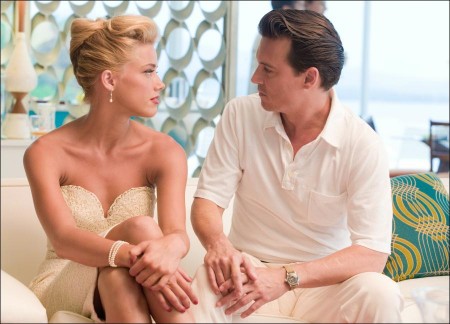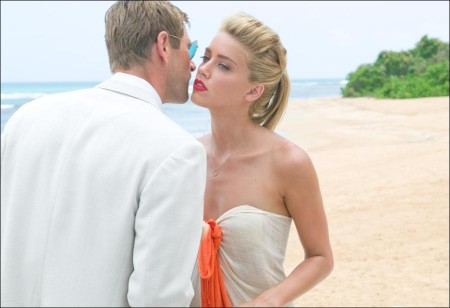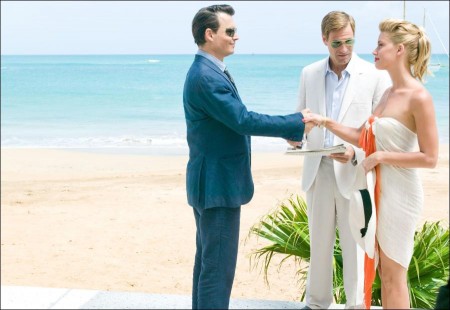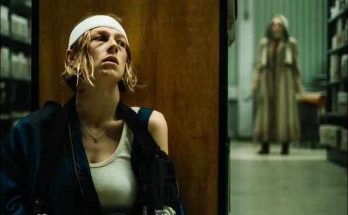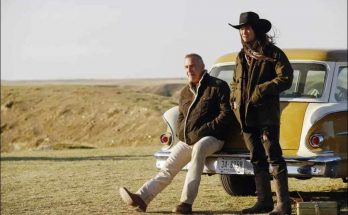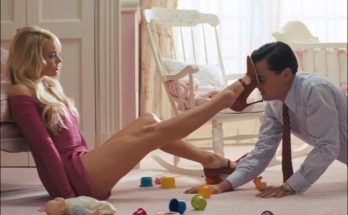Production designer Chris Seagers and his team embarked on an intensive period of research into Puerto Rico circa 1960. “Puerto Rico, at that time, was a really depressed place,” says Seagers. “It was very poor, and the main industry there was agriculture. However, American developers were beginning to move in, bringing the oil refineries and pharmaceutical companies.
The Puerto Ricans were being pushed aside in the name of progress, which was actually pure greed. That’s what Bruce wanted to capture. It was a pretty unique transitional period. You are leaving the post-war era and entering the 60s.” “Chris is a magnificent artist,” Depp states. “He was on the money every single time; everything down to the finest detail just was Puerto Rico, 1960.” Graham King goes further: “Chris would build a set and we would use that set maybe three or four times, but the audience will never know! He’d turn it around dress it differently, etc. It was very creative, very guerilla-style filmmaking.”
Capturing location photography was critical for both Robinson and Depp. “We didn’t shoot on sound stages because Bruce Robinson just doesn’t feel it,” Depp says. “He’s an animal of the street. He likes to be in an environment that’s not necessarily structured for cinema, but for feeling and emotion. It’s what you’d call available stimulus. Bruce was pretty adamant about the idea of shooting in locations and there’s nothing better for an actor than to be in that world.”
The principal location that Robinson was looking for was Sanderson’s beach house, which represented the essence of the story. It had to be the quintessential Caribbean paradise, aquamarine water, sugar white sand, waving palm trees, and beautiful sunsets. The film did not have a large budget for construction. However, it was soon obvious that the only way to get the combination of an exquisite beach house and the glorious beach location was to build it. The location department was fortunate enough to find the perfect spot at the Governor’s beach property, located just outside the town of Fajardo in Puerto Rico.
“The concept behind the design of Sanderson’s house was that the first time Kemp walks through the door he sees that perfect horizon line. It’s just the ocean and that house!” explains Seagers. “It’s everything he has ever dreamt of. The house, the girl, the ocean, the boat! Initially, he is in awe of the whole thing; but as we progress through the movie he becomes more and more disillusioned.”
Set decorator Rosemary Brandenburg was ecstatic when she saw Sanderson’s house. “Chris Seagers told me that he had once worked with an architect who specialized in recreating that ahead-of-the-curve 1960 style,” says Brandenburg. “It was a real tour de force of architecture and a wonderful opportunity for me to be able to dress it.”
Another significant set was that of Sala’s apartment. Robinson and Seagers wanted to use an actual location in Old San Juan. “We needed it to be a complete contrast to Sanderson’s house, which was state of the art architecture for that period,” says Seagers. “The location was extremely hard to find because the view from the window was so important. In one of the scenes, Kemp and Sala are watching a neighbor’s television in the opposite building using binoculars. We looked at practically every empty building in Old San Juan before we found the house on O’Donnell Street. We essentially took a derelict house and ripped everything out of it.”
“We had to bring in appropriately aged and crusty furniture for this bachelor pad. Sala lives there with his chickens, and occasionally, a roommate, Moberg, who sleeps on the couch,” says Brandenburg. “Since Sala has an extra room, he invites Kemp to stay.”
Another notable set was the San Juan Star newspaper office, Kemp’s place of employment when he arrives on the island and where he meets most of the principal characters in the story. Finding the right location in old San Juan was key. “Bruce wanted to see some landscape, and show 1930s windows,” says Seagers. “We were walking through Old San Juan one day and suddenly saw this 1930s building. When we went inside, we found a series of offices on the sixth floor. There were a few air conditioning units and roofs to deal with, but, for the most part, it was perfect. Our biggest concern was whether they would let us gut it, and lo and behold, they did. “We took out all the walls to make it all one big space.”
The dressing of the newspaper was an intricate business for set decorator Rosemary Brandenburg. “We had a list of ten or twelve different desks that we were creating,” she says. “They were for the society columnist, the fashion reporter, the sports guy, and the business guy. We painstakingly went through archival volumes and scanned actual articles of the time to use as dressing on their desks.”
“In the movie, Kemp has been hired as a replacement to Madame Lazanga,” says Brandenburg, “so initially, the desk was fully tricked out. Madame Lazanga was purported to have been a drag queen. So when we first see the desk, it is full of astrology gear, feather boas, hats; all kinds of flamboyant stuff. When Kemp takes over, it all gets stripped away.”
In addition to the newspaper offices, one of the key visuals in the film was the printing press. Seagers was very skeptical about the prospects of finding a period printing press. “One day we heard that The San Juan Star had closed down,” says Seagers. “We tracked down the proprietor who invited us over and there it was. It wasn’t exactly period, but printing presses have not really changed that much. It had everything we needed, the conveyor belts, even the rolls of paper. All we needed to do was to repaint it and add some details to make it more historically accurate.”
While Seagers and his team were at the printing press, they were allowed to go up to the archive office. “Incredibly,” says Seagers, “there were these wooden pallets with bound archival copies of The San Juan Star going back to the late 50s. It was all there. All the reference material we needed in one place. Fortunately, the owner agreed to let us use the archival material for the Star newspaper office set.”
One of the biggest challenges for Seagers and his team were the carnival sequences. “We had to recreate the island of St. Thomas in Puerto Rico, which is very different,” says Seagers. “We found an old colonial town in Vega Baja. It needed some work, but it had the bones of what we needed. It had a beautiful plaza and gorgeous colonial architecture. Some of the municipal offices were inside the main building. They allowed us to create the Colonial Hotel and an upper bar area with a beautiful view of the plaza. The town of Vega Baja proved to be very useful to us.”
Two scenes of particular concern to the production were the cockfights. “The roosters are an essential element to Sala’s character,” says Seagers. “Bruce was always very concerned about how this would be shot. It was never about seeing a fight. It was about showing the ballet of their movements, the artistry of it all. The birds we used were exquisite, and beautifully kept. We did a lot of research about what we wanted to photograph. We needed to see the birds leaping into the air, and spreading their wings.”
A lot of work went into making sure that the filmmakers could achieve the shots they wanted without any harm coming to the birds in any way. In order to achieve that goal, the production invited the American Humane Association to supervise all the animal action including the cockfighting. Officer Laura Sweet worked on the initial training period, and the first sequence, and they also brought in Officer Gina Johnson to assist her in the first scene because of the number of animals involved. Avian Veterinarian Antonio Riveras was brought in to monitor the birds for stress and heat exhaustion.
“It was very important for us to adhere to the American Humane Association’s guidelines,” says executive producer Patrick McCormick. “We wanted to make sure that no animals were harmed in any way. We had to start figuring out ways to stage these cockfighting events so that we were totally sure the birds were safe. We wanted everyone involved to be assured that their health and welfare were never endangered.”
“In a cockfight, the bird’s natural spurs are clipped before the fight,” explains McCormick. “They are replaced with artificial metal ones, so that every bird has the same size spurs, and the spurs are what cause the injuries. We created soft rubber spurs to replace them. The other thing we talked about was their beaks. We figured out we could tape them without impairing their breathing, as long as it was for a very short period of time. Initially, we thought this would be sufficient. However, we learnt from the A.H.A., that it was an issue if the birds touched in any way because this constituted fighting,” says McCormick. “So, in addition to the rubber spurs and taping of their beaks, we had to figure out how to restrain the birds.”
Laura Sweet from the A.H.A. worked with trainer Eric Colon for several weeks to devise a method of creating the shots without the birds ever touching. With the aid of the costume department and prop-master Drew Petrotta, and costume designer Colleen Atwood, they devised an ingenious harness which fitted under the feathers. The harnesses were then attached to monofilaments, which allowed the animal wranglers to control the birds so they never got close to each other. The scenes were closely monitored by the A.H.A reps and by first assistant director Peter Kohn. They only allowed seconds for each take, and only one or two takes for each shot. The hard work paid off and the filmmakers were thrilled with the footage. All the roosters used in the movie have been relocated to a life of ease on a ranch in Canyon Country, near Los Angeles.
Getting the props right on the film was extremely important. “We did a lot of research particularly regarding the photographs and written material. We wanted to get the details right,” says prop-master Drew Petrotta. In addition to the usual reference sources, they used many of Hunter S. Thompson’s own photographs, many of which featured the writer with his pipe, his typewriter and various bottles of liquor.
“The most important prop in the movie was the typewriter,” says Petrotta. “We probably looked at about twenty different ones before we found one everyone was happy with. There was quite a range of typewriters during that period. We were looking for something that Johnny was comfortable with, that Bruce liked aesthetically, and that was similar to what Hunter would have used.”
“However, I think it is the sunglasses that we notice most in this movie,” says Petrotta. “Johnny came to me with a pair that he liked and we duplicated them many times. He really has an eye for what he looks good in. Also, the character of Paul Kemp smokes quite a bit in this movie. Johnny doesn’t smoke so we created period packaging and filled them with herbal cigarettes that don’t contain any tobacco.”
A key element in the style of The Rum Diary was its use of period cars. Picture car coordinator Steve Mann was brought in to work with local Rick Gonzalez, and together they assembled the wide array of cars needed. Mann was pleasantly surprised to find that the island had a wealth of cars from that period, in very good condition. “We found a Lincoln Town car, and some really nicely restored old cars,” says Mann. “Of course we had to age them down a bit to make them look old and dirty, but we cleaned them up before we gave them back to their owners,” he says smiling.
“We found the red 1958 Chevy Corvette on the island,” Mann says, “and then had to match it to the 1959 model, which Sanderson drives in the film. The two models are very similar. There are just some chrome pieces and the hood that are different. It’s got a powerful engine. It’s all made of fiberglass and it goes really fast,” he laughs. “It’s a pretty sexy car and there is a big scene revolving around it.”
Read the Full Production Notes for The Rum Diary
Visits: 313
